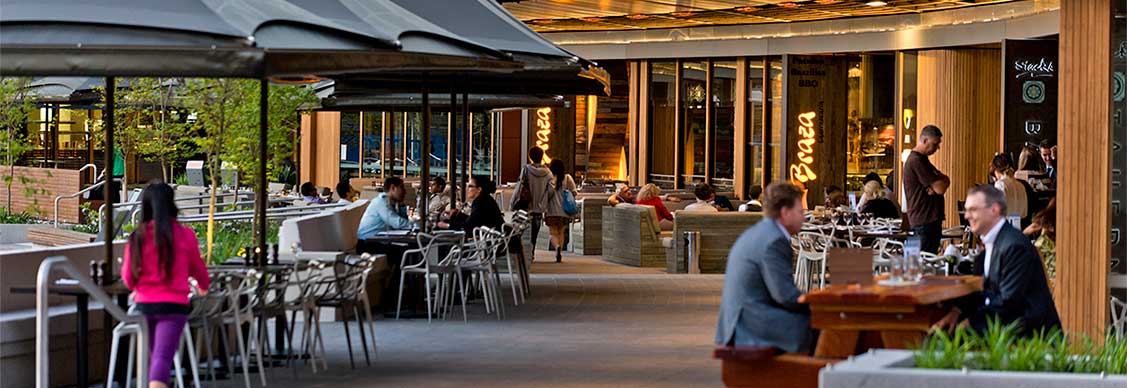The pandemic’s enduring impact on cities
City centers looked different during the pandemic. What changes will stick?
When the pandemic halted the daily descent of commuters and tourists, some streets were eerily empty, while restaurant tables proliferated on others. Droning cars were replaced with rattling bikes. Residents reclaimed areas normally thronged with tourists.
Now, with a return to the office and travel re-emerging, there are questions about which changes were temporary, and which will endure.
“City-makers are always trying to capture the energy that has long drawn people to urban centres,” says Jeremy Kelly, lead director of JLL’s global cities research. “The pandemic has allowed us to test out some great ideas. And, I’d argue, some not so good ones.”
For instance, take the so-called parklet. The term arose to denote parking spaces turned into outdoor dining areas. They helped restaurants continue to serve customers when COVID-19 restrictions prevented or limited indoor dining.
Milan now has more than 1,000 parklets. Richmond, VA, is purchasing parklets using U.S. COVID-19 relief funds.
In Melbourne they became so popular that at least two local councils are considering making them permanent.
“We asked people for their feedback and 96 percent said outdoor dining had been a good addition to the city and 81 percent want outdoor dining to become a permanent feature,” Melbourne Lord Mayor Sally Capp said in an interview with local media.
The “zero-car city”
Parklets are just one of the efforts underway to pedestrianize streets.
Paris, for instance, has become more cyclist centric. When COVID-19 hit, the city designated over 50 kilometres of traffic lanes to bikes. The Rue de Rivoli, which runs past the Louvre, became a multi-lane bicycle highway.
Wellington, New Zealand, is moving ahead with plans to ban cars from four main streets within its “golden mile.”
And by the end of 2021, a 150 meter-long section of London’s Oxford Street is to be closed to vehicles. Pedestrian piazzas will be created on either side of Britain’s busiest pedestrian junction, Oxford Circus.
“The pandemic is enabling cities to reset their urban mobility strategies,” says Kelly. “It’s offering an opportunity to fast-track initiatives that encourage sustainable and micro-mobility.”
But shutting down streets can have negative effects, too. Congestion transferred to other areas and the effect on retailers are hot topics in cities where this is being debated.
Paris Mayor Anne Hidalgo has publicly stated her intention to keep the streets car-free.
“Authorities will need to hold their nerve in maintaining their progressive and sustainable policies against inevitable pressure to revert to pre-COVID practices, particularly if reducing cars on streets causes traffic congestion elsewhere,” Kelly says.
Looking for more insights? Never miss an update.
The latest news, insights and opportunities from global commercial real estate markets straight to your inbox.
When tourism stops
In some cities, travel restrictions left a gaping hole, forcing city planners to go back to the drawing board.
For example, Sydney’s Darling Quarter, a vast public space with an emphasis on dining and outdoor events, had been created with tourists in mind. It is now being repositioned as ‘Sydney’s great backyard.’
“We had to find ways to increase repeat visitation from loyal Sydneysiders and continue to bring energy to the precinct,” says Adelaide Dias, Darling Quarter marketing manager.
Strategies have shifted to target residents and workers within a reduced 5 kilometer radius of the precinct’s eateries. Partnerships with nearby hotels, regular live music and meal-deals targeted at workers are kickstarting its revitalisation.
Many of these changes are likely to be lasting, Dias says.
“We’ll continue to activate in this way even when tourists return, giving them a unique experience each time,” she says.
Silver linings
For cities overburdened by tourists, the pandemic has given them a chance to implement policies for more sustainable tourism.
For example, Venice is introducing a tax for day tourists, banning cruise ships from the lagoon and limiting people renting out their homes to visitors.
In Amsterdam, city leaders have plans to ban holiday rentals, relocate the red-light district and allow coffee shops to sell cannabis to locals only. Locals concerned about the measures being too drastic are instead calling for a reduction in tourist overnight stays to 12 million annually. In 2019, 22 million tourists visited the city.
Barcelona has laid out restrictions on short-term accommodation rentals, and buses carrying day-tourists must arrive outside the city center. The city is also encouraging tourists to divert from its crowded city streets and explore open green spaces.
“For all the impact the pandemic caused on city economies, the opportunity to better integrate the tourist sector into local communities should not be wasted,” Kelly says.
